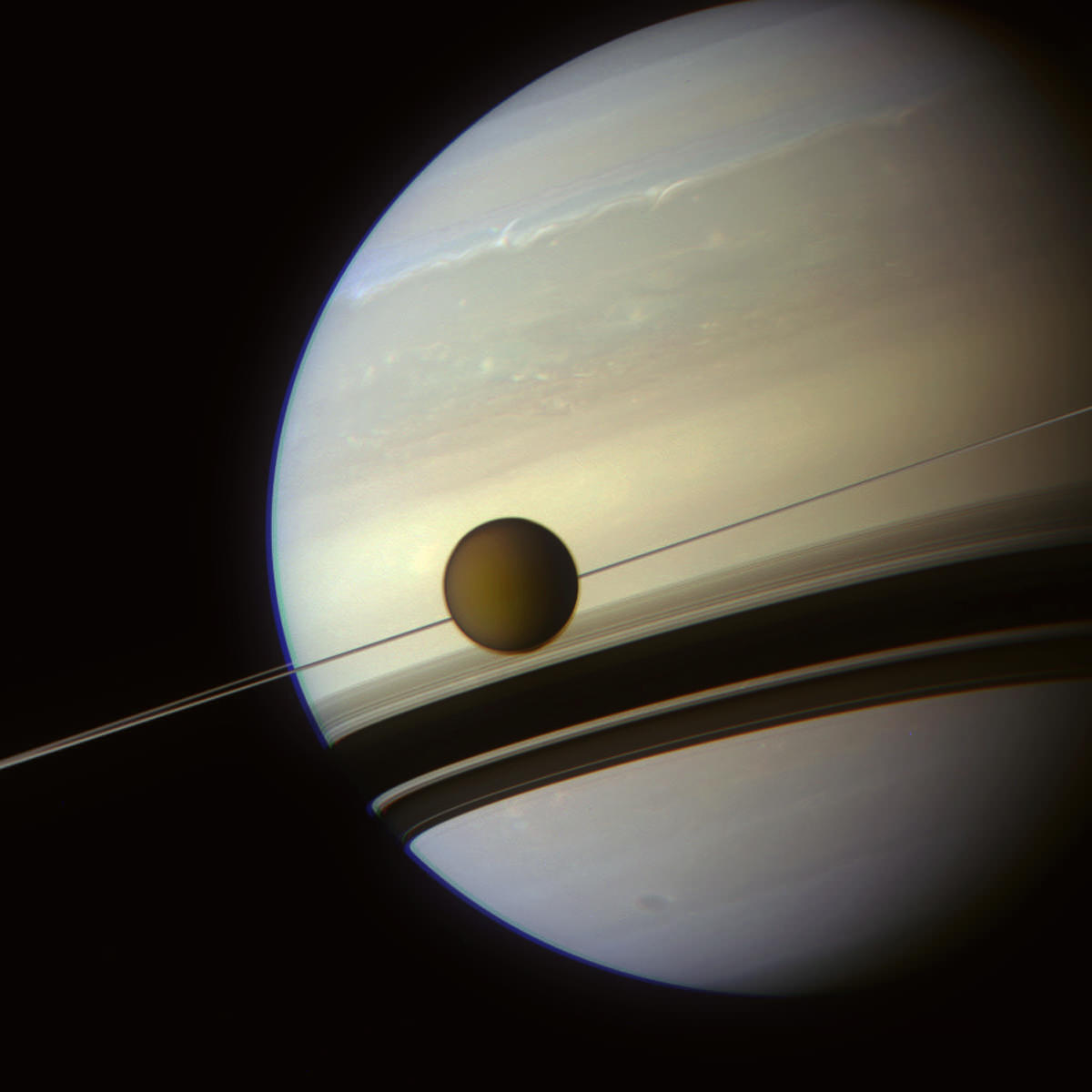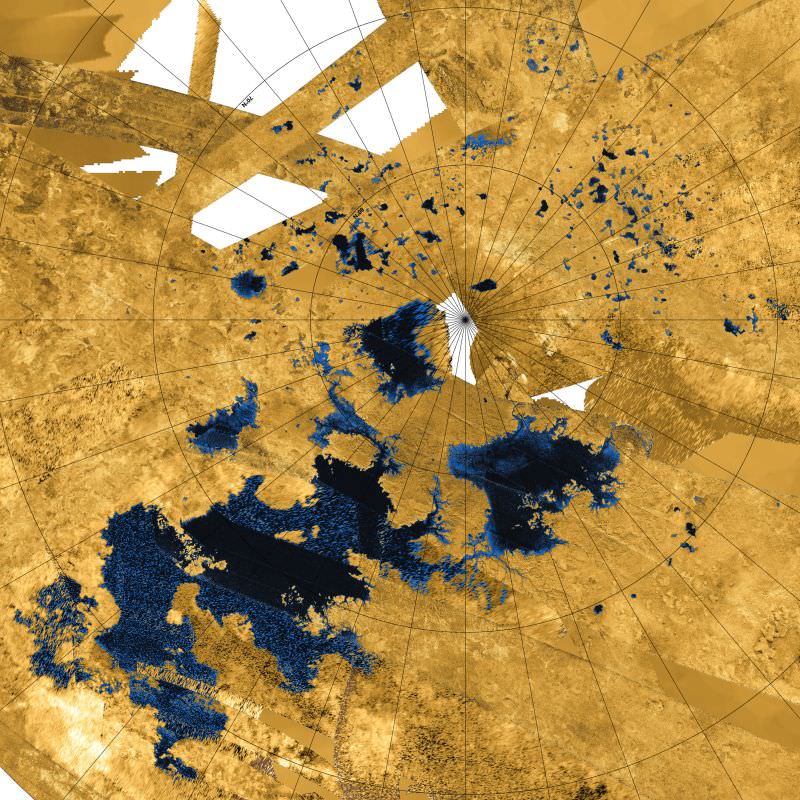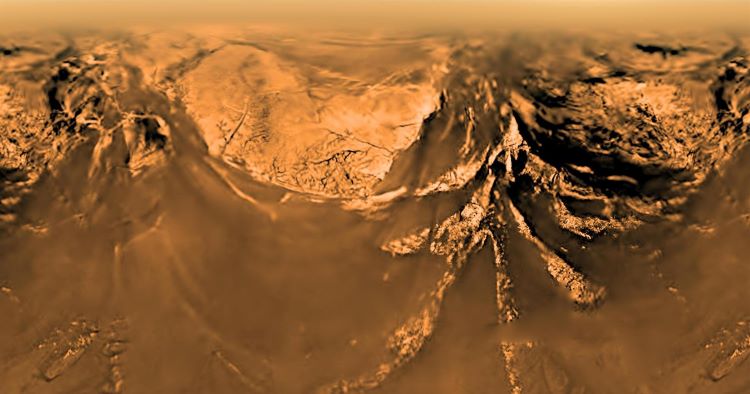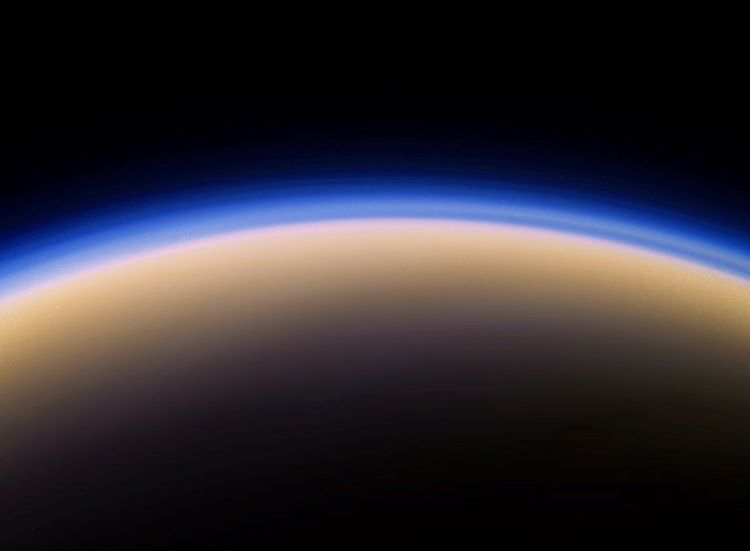Few places in the solar system are better suited to a balloon than Titan. The combination of low gravity and high atmospheric density makes Saturn’s largest moon ideal for a lighter than “air” vehicle, and the idea to put one there has been around for at least two decades. So why haven’t we yet? The simple answer is the size of the necessary balloon is too large for the existing launch platforms. But a team from Boeing, the prime contractor on the Space Launch System (SLS), believes their new launch platform will be capable of getting a large balloon into orbit, along with its necessary scientific payload – and start unlocking the mysteries of this intriguing moon.
Continue reading “SLS Could Launch A Titan Balloon Mission”A Mission to Dive Titan’s Lakes – and Soar Between Them
Titan is one of the solar system’s most fascinating worlds for several reasons. It has something akin to a hydrological cycle, though powered by methane. It is the solar system’s second-largest moonMooner our own. It is the only other body with liquid lakes on its surface. That’s part of the reason it has attracted so much attention, including an upcoming mission known as Dragonfly that hopes to use its thick atmosphere to power a small helicopter. But some of the most interesting features on Titan are its lakes, and Dragonfly, given its means of locomotion, can’t do much with those other than look at them from afar. So another mission, initially conceived by James McKevitt, then an undergraduate at Loughborough University but now a PhD student at University College London would take a look at both their surface and underneath.
Continue reading “A Mission to Dive Titan’s Lakes – and Soar Between Them”Dragonfly is Going to Titan on a Falcon Heavy

NASA has given SpaceX the contract to launch the Dragonfly mission to Saturn’s moon Titan. A Falcon Heavy will send the rotorcraft and its lander on their way to Titan in 2028, if all goes according to plan, and the mission will arrive at Titan in 2034. Dragonfly is an astrobiology mission designed to measure the presence of different chemicals on the frigid moon.
Dragonfly will be the second craft to visit Titan, along with the Huygens probe and its short visit back in 2005.
Continue reading “Dragonfly is Going to Titan on a Falcon Heavy”Titan May Have a Methane Crust 10 Km Thick

Saturn’s moon, Titan, is an anomaly among moons. No other moons have surface liquids, and aside from Earth, it’s the only other Solar System object with liquids on its surface. However, since Titan is so cold, the liquids are hydrocarbons, not water. Titan’s water is all frozen into a surface layer of ice.
New research suggests that under the surface, Titan is hiding another anomaly: a thick crust of methane.
Continue reading “Titan May Have a Methane Crust 10 Km Thick”Experimental Radar Technique Reveals the Composition of Titan’s Seas

The Cassini-Huygens mission to Saturn generated so much data that giving it a definitive value is impossible. It’s sufficient to say that the amount is vast and that multiple scientific instruments generated it. One of those instruments was a radar designed to see through Titan’s thick atmosphere and catch a scientific glimpse of the moon’s extraordinary surface.
Scientists are still making new discoveries with all this data.
Continue reading “Experimental Radar Technique Reveals the Composition of Titan’s Seas”Lake Shorelines on Titan are Shaped by Methane Waves

Distant Titan is an oddball in the Solar System. Saturn’s largest moon—and the second largest in the entire Solar System—has an atmosphere denser than Earth’s. It also has stable lakes and seas of liquid hydrocarbons on its surface.
New research shows that waves on these seas are eroding Titan’s coastlines.
Continue reading “Lake Shorelines on Titan are Shaped by Methane Waves”Titan Probably Doesn’t Have the Amino Acids Needed for Life to Emerge

Does Saturn’s largest moon, Titan, possess the necessary ingredients for life to exist? This is what a recent study published in Astrobiology hopes to address as a team of international researchers led by Western University investigated if Titan, with its lakes of liquid methane and ethane, could possess the necessary organic materials, such as amino acids, that could be used to produce life on the small moon. This study holds the potential to help researchers and the public better understand the geochemical and biological processes necessary for life to emerge throughout the cosmos.
Continue reading “Titan Probably Doesn’t Have the Amino Acids Needed for Life to Emerge”How Did Life Get Started on Earth? Atmospheric Haze Might Have Been the Key

A recent study accepted to The Planetary Science Journal investigates how the organic hazes that existed on Earth between the planet’s initial formation and 500 million years afterwards, also known as Hadean geologic eon, could have contained the necessary building blocks for life, including nucleobases and amino acids. This study holds the potential to not only help scientists better understand the conditions on an early Earth, but also if these same conditions on Saturn’s largest moon, Titan, could produce the building blocks of life, as well.
Continue reading “How Did Life Get Started on Earth? Atmospheric Haze Might Have Been the Key”Titan’s “Magic Islands” Could Be Floating Blobs of Organic Solids

When the Cassini spacecraft returned radar scans of the surface of Saturn’s moon Titan, the results were mindblowing. It revealed giant lakes or seas of liquid methane, a complete absence of waves and what seemed to be islands in the giant bodies of liquid. Now a team of scientists think they may be blobs of organic molecules that form in the atmosphere, collect in the lakes and float around!
Continue reading “Titan’s “Magic Islands” Could Be Floating Blobs of Organic Solids”Should We Send Humans to Titan?
Universe Today recently examined the potential for sending humans to Jupiter’s icy moon, Europa, and the planet Venus, both despite their respective harsh surface environments. While human missions to these exceptional worlds could be possible in the future, what about farther out in the solar system to a world with much less harsh surface conditions, although still inhospitable for human life? Here, we will investigate whether Saturn’s largest moon, Titan, could be a feasible location for sending humans sometime in the future. Titan lacks the searing temperatures and crushing pressures of Venus along with the harsh radiation experienced on Europa. So, should we send humans to Titan?
Continue reading “Should We Send Humans to Titan?”


